'Gods on Indian currency notes' debate: How the Indian paper Rupee has evolved since Independence — View Timeline
The transition of currency management from colonial to independent India has been a unique one. From August 14, 1947 (India's independence) to January 26, 1950 (India became a republic) the Reserve Bank continued to issue the extant notes.
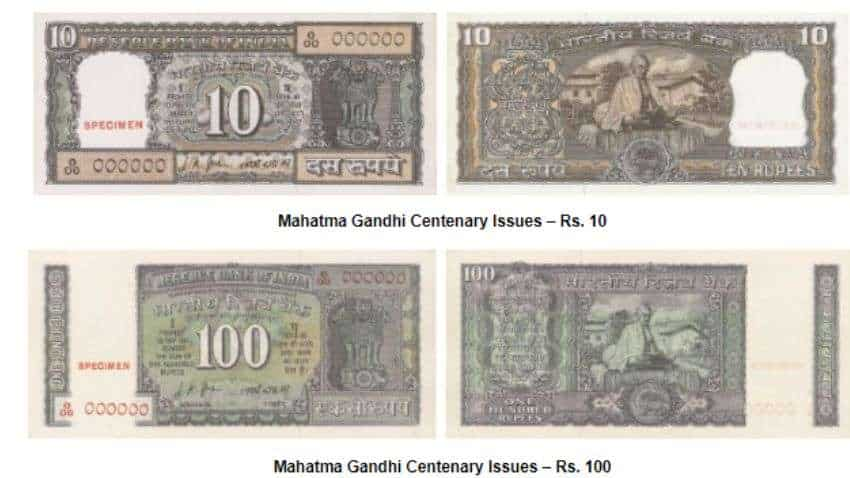
The debate around photos of Lord Ganesha and Goddess Lakshmi should be featured on currency notes or not, has kindled the curiosity of many. This began after Delhi Chief Minister Arvind Kejriwal said on Wednesday that the images of Lord Ganesha and Goddess Lakshmi should be printed on Indian currency notes.
The Indian Currency has changed and evolved rapidly over the years. And this does make us wonder — whose images have been featured on the Indian currency so far? When did Mahatma Gandhi's image first feature on currency notes?
Which all languages and animals have been featured on it? When and why were new elements added? When were the broader notes phased out?
The transition of currency management from colonial to independent India has been a unique one.
From August 14, 1947 (India's independence) to January 26, 1950 (India became a republic) the Reserve Bank continued to issue the extant notes.
Follow the timeline of the evolution of Indian currency:
1949- New design Rupee 1 was brought out by the Government of India.

It was felt that the King's portrait should be replaced by a portrait of Mahatma Gandhi. However, in the final analysis, Lion Capital at Sarnath was chosen.

1950- First Republic India banknotes were issued in the denominations of Rs. 2, 5, 10 and 100.
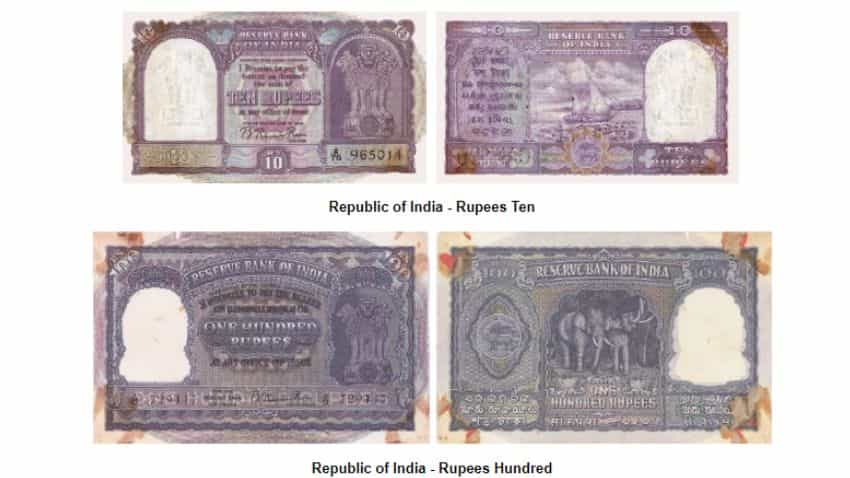
1953- Hindi was prominently displayed on the new notes.
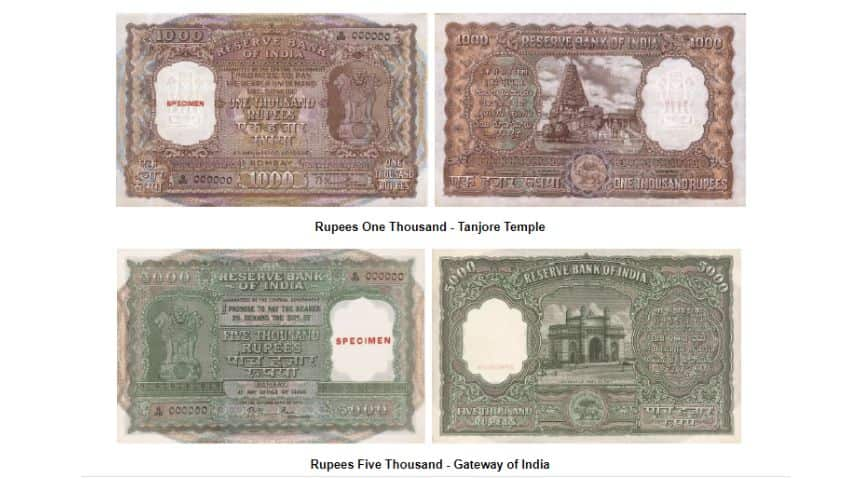
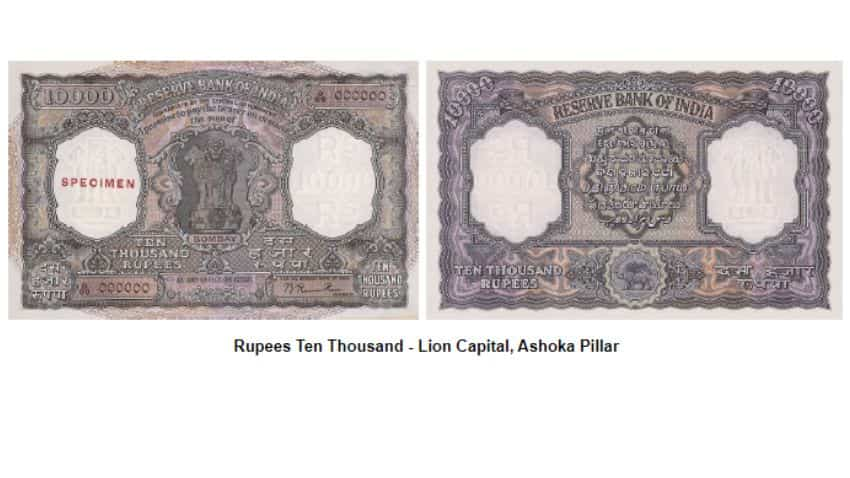
1954- High denomination notes were reintroduced.
In the early series, small denomination of Rs. 2 and 5 depicted the fauna motifs such as tiger, bucks and doe, Sambar deers and gazelles.
1967- During early sixties sizes of notes were reduced.
1969- Mahatma Gandhi first featured on Indian currency notes. The design series was issued to honour his birth anniversary. Note depicted Gandhi with the Sevagram Ashram as the backdrop.


1972- Rs 20 denomination notes introduced.
1975- Rs 50 denomination notes introduced.

1978- High denomination notes were demonetised.
1980's- New set of notes was issued. The emphasis lay on symbols of Science & Technology (Aryabhatta on the Rs. 2 note), Progress (the Oil Rig on Re 1 and Farm Mechanisation on Rs. 5 and Hirakud dam on Rs. 100) and a change in orientation to Indian art forms on the Rs. 20 and the Rs. 10 notes. (Konark Wheel, Peacock, Shalimar garden).



1987- Rs 500 denomination notes were introduced with the portrait of Mahatma Gandhi. Lion Capital, Ashoka Pillar continued as the water mark.

1996- A new 'Mahatma Gandhi Series' was introduced.
October 9, 2000- Rs 1000 denomination notes were introduced. New features such as hanged watermark, windowed security thread, latent image and intaglio features for the visually handicapped were introduced.

November 18, 2000- Rs. 500 notes were issued in changed colour. The colour-shifting ink in the numeric value at the centre was incorporated as an additional security feature.

2005- Enhanced security features were introduced. Year of printing on the banknotes was introduced for the first time.
2006- To avoid re-printing of the defective notes with same serial number, "Star Series” was introduced on the banknotes.

2011- The Rupee symbol (₹) was introduced and the new Rupee symbol was incorporated in banknotes and coins.
2015- New features such as bleed lines on higher denominations and exploding numbers were introduced.
Central banks worldwide adopt a standardised practice of periodic upgradation of security features of banknotes. Re 1 denomination notes were re-introduced.
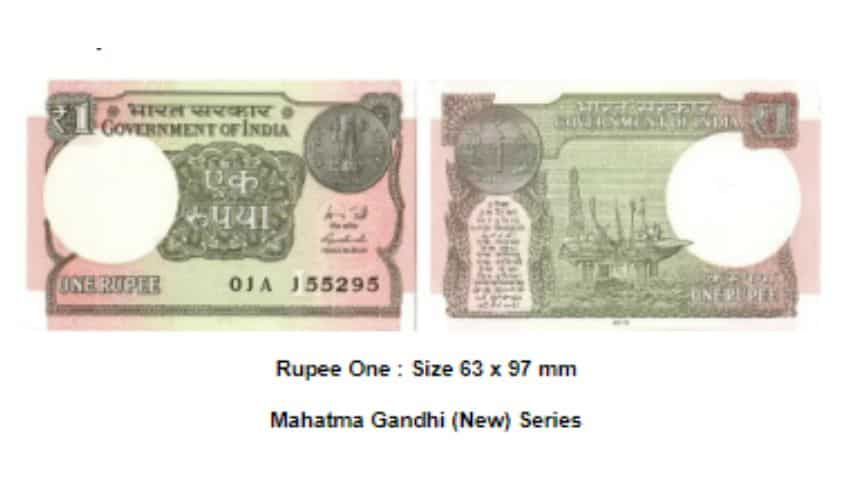
2016- The new banknotes were introduced in the Mahatma Gandhi (New) Series. Rs 2000 denomination notes were introduced.
2017- Rs 200 denomination notes were introduced.
Get Latest Business News, Stock Market Updates and Videos; Check your tax outgo through Income Tax Calculator and save money through our Personal Finance coverage. Check Business Breaking News Live on Zee Business Twitter and Facebook. Subscribe on YouTube.
08:41 PM IST











 Rupee hits record low as dollar strengthens amid US election uncertainty
Rupee hits record low as dollar strengthens amid US election uncertainty Rupee falls 5 paise to close at all-time low of 83.71 against US dollar post-budget
Rupee falls 5 paise to close at all-time low of 83.71 against US dollar post-budget  Rupee rises 6 paise against US dollar as crude oil prices ease
Rupee rises 6 paise against US dollar as crude oil prices ease Indian Rupee exhibited lowest volatility in three years during 2023-24
Indian Rupee exhibited lowest volatility in three years during 2023-24  Rupee vs Dollar: Domestic currency falls 3 paise to settle at 83.19 against American dollar
Rupee vs Dollar: Domestic currency falls 3 paise to settle at 83.19 against American dollar